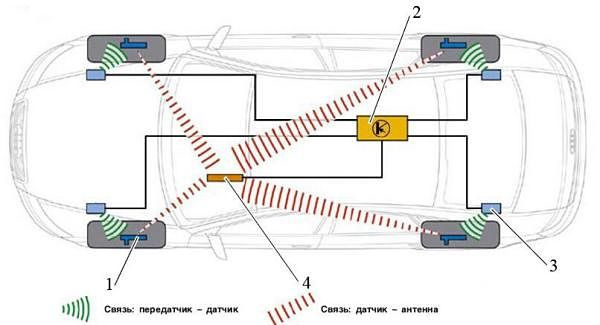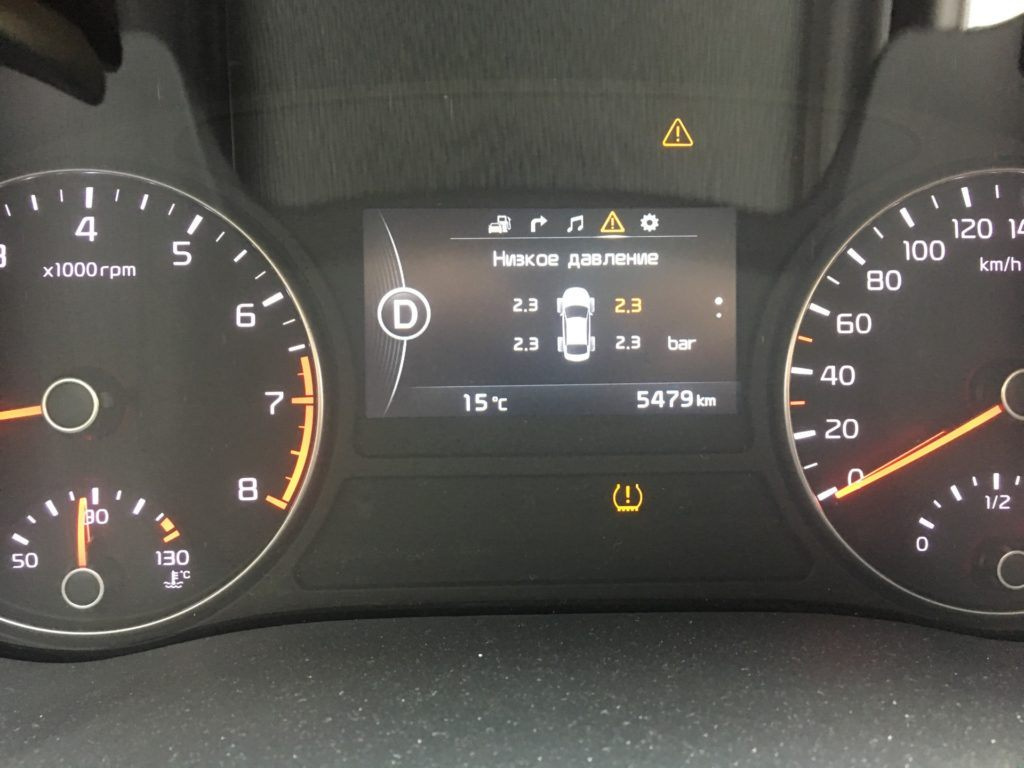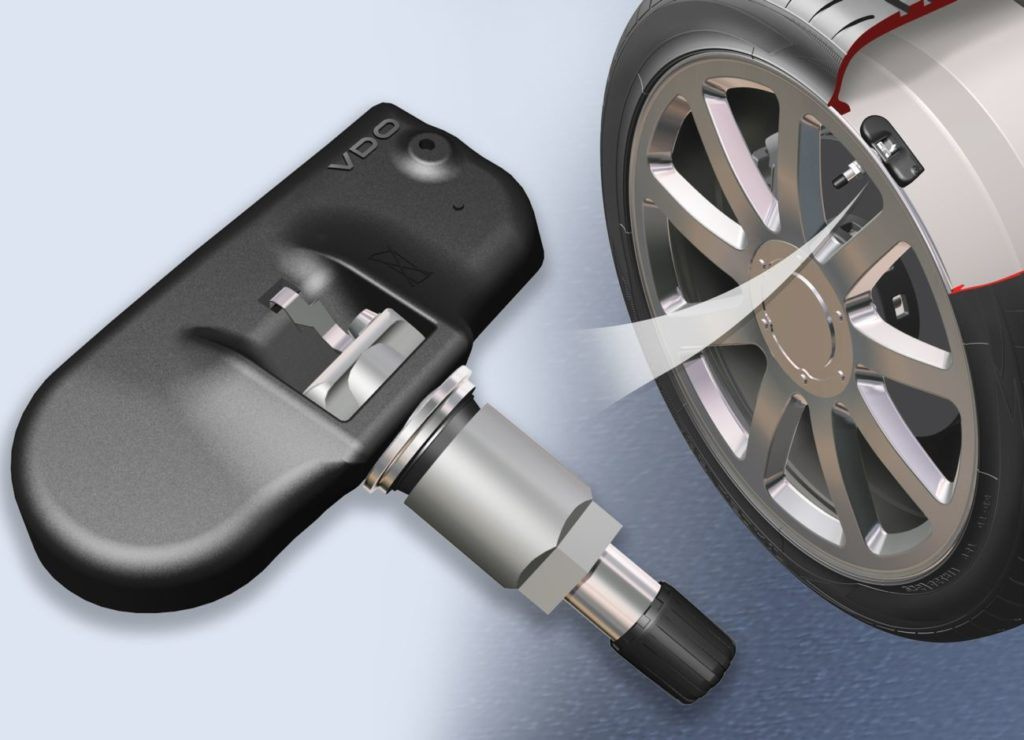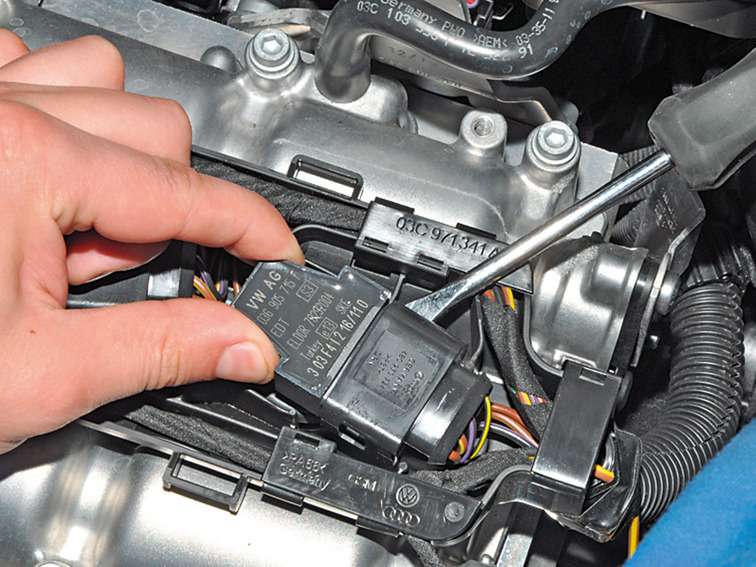
Tire Pressure Monitoring System TPMS
Content
Maintaining optimal tire pressure affects road grip, fuel consumption, handling and overall driving safety. Most drivers use a pressure gauge to check pressure, but progress has not stopped and modern cars are actively implementing the TPMS electronic tire pressure monitoring system. For example, in Europe and the USA it is mandatory for all vehicles. In Russia, the presence of a TPMS system has become a mandatory requirement for the certification of new types of vehicles since 2016.
What is TPMS system
The tire pressure monitoring system TPMS (Tire Pressure Monitor System) belongs to the active safety of the car. Like many other innovations, it came from the military industry. Its main task is to monitor tire pressure and give a warning signal to the driver when it falls below a threshold value. It seems that tire pressure is not the most important parameter in a car, but it is not. The first is driving safety. For example, if the tire pressure on each side of the axles is different, then the car will pull in one direction. In base trim levels, TPMS began to appear in 2000. There are also standalone monitoring systems that can be purchased and installed separately.
Types of tire pressure monitoring systems
Basically, systems can be divided into two types: with direct (direct) and indirect (indirect.
Indirect measurement system
This system is considered the simplest in terms of the principle of operation and is implemented using ABS. Determine the radius of the moving wheel and the distance it travels in one revolution. ABS sensors compare readings from each wheel. If there are changes, a signal is sent to the dashboard of the car. The idea is that the radius and distance traveled by a flat tire will be different from the control.
The advantage of this type of TPMS is the absence of additional elements and reasonable cost. Also in the service, you can set the initial pressure parameters from which deviations will be measured. The disadvantage is the limited functionality. It is impossible to measure the pressure before the start of the movement, the temperature. The deviation from the actual data can be about 30%.
Direct measurement system
This type of TPMS is the most modern and accurate. The pressure in each tire is measured by a special sensor.
The standard set of the system includes:
- tire pressure sensors;
- signal receiver or antenna;
- Control block.
Sensors transmit a signal about the state of temperature and tire pressure. The receiving antenna transmits the signal to the control unit. The receivers are installed in the wheel arches of the car, each wheel has its own.

Operation of the TPMS system with and without receivers
There are systems in which there are no signal receivers, and wheel sensors communicate directly with the control unit. In such systems, sensors must be "registered" in the block so that it understands which wheel has a problem.
Driver information may be displayed in different ways. In cheaper versions, instead of a display, an indicator lights up, indicating a malfunction. As a rule, it does not indicate which wheel the problem is. In the case of displaying data on the screen, you can get information about the temperature and pressure for each wheel separately.

TPMS display on dashboard
Pressure sensors and their varieties
Sensors are the key components of the system. These are complex devices. They include: a transmitting antenna, a battery, the pressure and temperature sensor itself. Such a controller device is found in most advanced systems, but there are also simpler ones.

Wheel pressure sensor (internal)
Depending on the device and installation method, sensors are distinguished:
- mechanic;
- external;
- interior.
Mechanical sensors are the simplest and cheapest. They screw on instead of the lid. Tire pressure moves the cap to a certain level. The green color of the external valve indicates normal pressure, yellow - pumping is required, red - low level. These gauges do not show exact numbers; they are also often just crooked. It is impossible to determine the pressure on them in motion. This can only be done visually.
External pressure sensor
External electronic sensors are also screwed into the valve, but they transmit a continuous signal with a certain frequency about the state of pressure to the display, pressure gauge or smartphone. Its disadvantage is susceptibility to mechanical damage during movement and accessibility for thieves.
Internal electronic pressure sensors are installed inside the disc and are aligned with the wheel nipples. All electronic stuffing, antenna and battery are hidden inside the steering wheel. A conventional valve is screwed in from the outside. The disadvantage is the complexity of installation. To install them, you need to darn each wheel. The battery life of the sensor, both internal and external, usually lasts 7-10 years. After that, you need to make a replacement.
If you have tire pressure sensors installed, be sure to tell the tire changer about it. In most cases, they are cut off when replacing rubber.
Advantages and disadvantages of the system
The following advantages can be highlighted:
- Increase the level of security. This is one of the main and important advantages of the system. With the help of TPMS, the driver can detect a malfunction in the pressure in time, thereby avoiding possible breakdowns and accidents.
- Preservation. Installing the system will require some funds, but in the long run it's worth it. Optimum pressure will help rationally consume fuel. It also increases tire life.
Depending on the type of system, it has certain disadvantages:
- Exposure to theft. If internal sensors cannot be stolen, then external sensors are often crooked. The attention of irresponsible citizens can also be attracted by an additional screen in the cabin.
- Malfunctions and faults. Vehicles arriving from Europe and the US are often shipped without wheels to save space. When installing wheels, it may be necessary to calibrate the sensors. It can be done, but some knowledge may be required. Outdoor sensors are exposed to the external environment and mechanical damage, which can lead to their failure.
- Additional screen (with self-installation). As a rule, expensive cars are initially equipped with a pressure control system. All information is conveniently displayed on the on-board computer screen. Self-installed systems have a separate screen, which looks strange in the cabin. Alternatively, install the TPMS module in the cigarette lighter. With a long parking and at any time, you can simply remove.
External display of the pressure control system
Possible TPMS malfunctions
The main reasons for malfunctioning TPMS sensors can be:
- malfunction of the control unit and transmitter;
- low sensor battery;
- mechanical damage;
- emergency replacement of a wheel or wheels without sensors.
Also, when replacing one of the built-in sensors with another, the system may conflict and give an error signal. In Europe, the standard radio frequency for sensors is 433 MHz, and in the US it is 315 MHz.
If one of the sensors is not working, reprogramming the system may help. The trigger level of an inoperative sensor is set to zero. This is not available on all systems.

TPMS malfunction indicators
The TPMS system can display two error indicators on the instrument panel: the word "TPMS" and "tire with an exclamation point". It is fundamentally important to understand that in the first case, the malfunction is associated with the operation of the system itself (control unit, sensors), and in the second with tire pressure (insufficient level).
In advanced systems, each controller has its own unique identification code. As a rule, they come in a factory configuration. When calibrating them, it is necessary to follow a certain sequence, for example, front left and right, then rear right and left. It can be difficult to set up such sensors on your own and it is better to turn to specialists.
